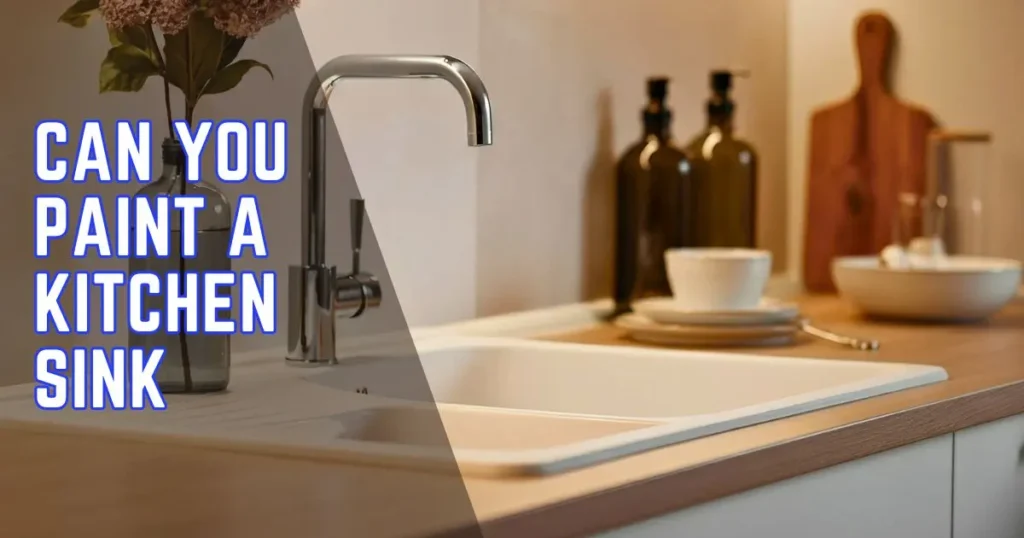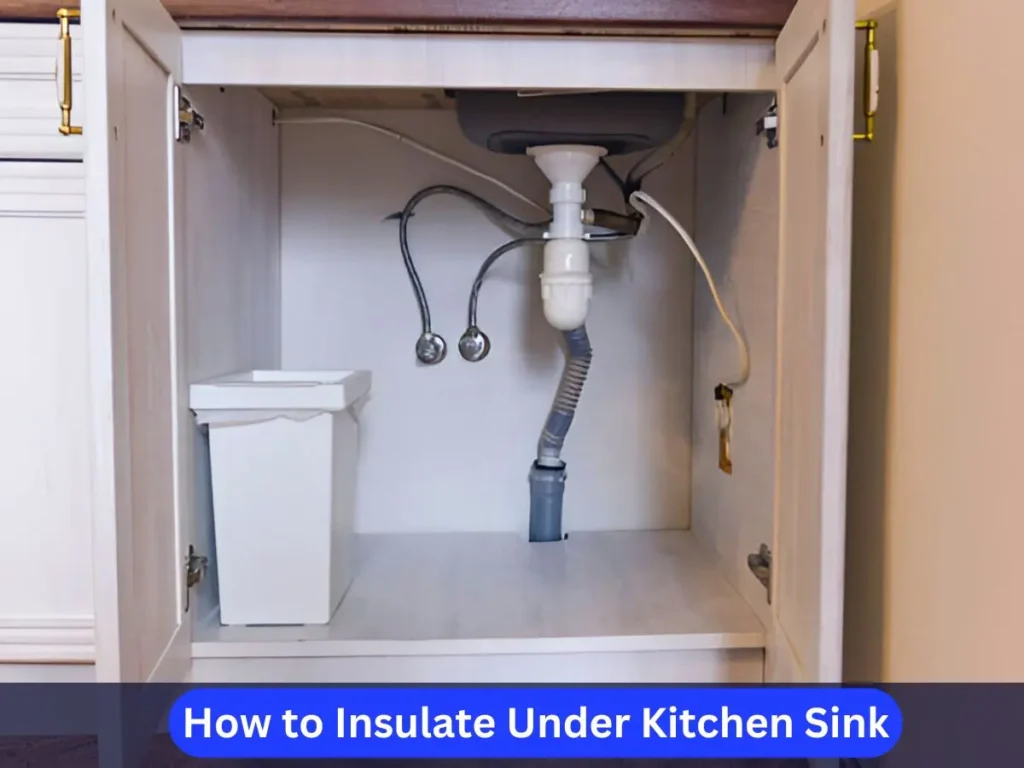Can a Toilet and Sink Share the Same Drain? Unlimited Answer
Table of Contents
Toggle
Are you a homeowner planning a bathroom remodel or a plumber facing space and cost constraints? One common question is: can a toilet and sink effectively share an identical drain? Sharing a drain between these fixtures can save time, space, and money, but it’s more complex.
In this comprehensive guide, we explore the intricacies of shared drain systems. We’ll cover essential plumbing requirements, critical regulatory considerations, the pros and cons of shared drains, maintenance tips, and alternative solutions. By the end, you’ll know if a shared drain system is ideal for your bathroom renovation project.
What Does It Mean for a Toilet and Sink to Share the Same Drain?
When discussing the concept of sharing a drain, we’re referring to a setup where the toilet and sink connect to a single drainpipe. This plumbing system allows wastewater from both fixtures to flow through one channel, which is ideal for small bathrooms or powder rooms. A shared drain can save space and material costs, simplify plumbing design, and reduce installation time. However, it’s crucial to connect two fixtures carefully to one pipe.
Essential factors include ensuring the pipe size accommodates combined wastewater flow, proper venting to prevent sewer gases in your home, maintaining the correct slope for efficient drainage, and adhering to local building and plumbing codes for safety and functionality.
Ignoring these details can lead to drainage problems, unpleasant odors, or even plumbing failures, which can be expensive to repair. Therefore, while sharing a drain is an efficient plumbing solution, it requires careful planning and professional execution.
Is It Common Practice in Modern Plumbing?
Combining drains is common in modern plumbing, and it has been made possible by plumbing design and technological advancements. The “wet venting” method allows multiple fixtures to share the same vent and drain and is frequently used in residential bathrooms.
Plumbing codes are essential to ensure safety, efficiency, and long-term functionality. Understanding plumbing techniques like wet venting can enhance your bathroom’s design and improve plumbing efficiency. Make sure your plumbing system is up to code for optimal performance.
Considerations for a Shared Drain System
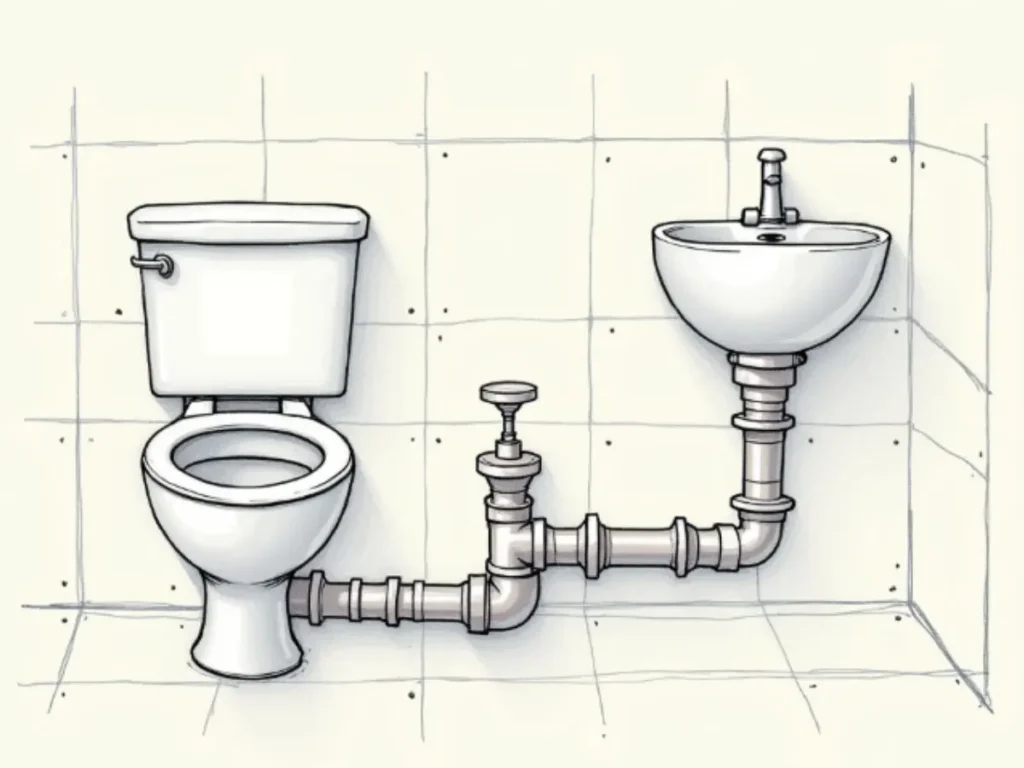
To ensure a shared drain system functions efficiently, consider these critical factors for optimal wastewater management:
- Proper Pipe Sizing: Select the correct pipe size to handle the expected wastewater volume, preventing backups and blockages. Correct pipe sizing is crucial for managing peak loads in the drainage system.
- Effective Venting: Adequate venting prevents hazardous sewer gas buildup and slow drainage issues. Proper venting ensures pressure equalization in the plumbing system, allowing smooth wastewater flow.
- Correct Slope and Installation Design: The proper slope is essential for maintaining steady wastewater flow. A well-designed slope uses gravity to move wastewater through the system efficiently without stagnation.
- Compliance with Local Plumbing Codes: Adhering to local plumbing codes ensures the system is legal, safe, and compliant. Following these guidelines ensures effective and safe plumbing practices.
Technical Questions Answered
What Size of Drainpipe is Required for a Shared Toilet and Sink System?
When installing plumbing in your home, knowing the standard drainpipe sizes for toilets and sinks is essential. Typically, toilet pipes are 3 or 4 inches long, while sink pipes range from 1.5 to 2 inches. If you connect these fixtures to a shared drain, ensure the pipe is large enough to manage the combined wastewater flow.
A 3-inch drainpipe is the minimum size recommended for most residential plumbing systems. However, check local plumbing codes as they might require larger pipes based on water usage.
Optimize your plumbing system using the correct pipe sizes for toilets and sinks to ensure efficient drainage and compliance with local regulations.

How Does Venting Affect a Shared Drain?
Proper venting is essential for effective plumbing drainage systems. By allowing air into the drainage pipes, it ensures smooth wastewater flow and prevents the escape of harmful sewer gases. With adequate venting, plumbing fixtures can avoid slow drainage and blockages. Prioritize proper venting in your plumbing system to maintain efficient and safe drainage.
What Is a “Wet Vent,” and How Does It Relate to Shared Drains?
A wet vent is a plumbing solution that serves as a drain and a vent for multiple fixtures, optimizing space and materials. For instance, a sink’s drainpipe can double as a toilet vent within a shared system.
Plumbing codes approve this method in many areas, but checking venting requirements is crucial, as local plumbing regulations vary. Understanding wet vent systems can enhance your plumbing efficiency and compliance.
Can Improper Venting Cause Sewer Gas Smells or Slow Drainage?
Yes, improperly vented plumbing systems can cause several issues affecting comfort and safety. Common problems include:
- Sewer gas odors in your bathroom: Faulty venting can cause unpleasant smells as gases seep into living spaces instead of being expelled outside. This issue not only creates discomfort but may also pose health risks.
- Slow drainage or gurgling noises: Poorly installed or maintained vents can obstruct pipe airflow, resulting in slow drainage or gurgling sounds. This may lead to clogs and increased wear on your plumbing system.
Proper vent installation and maintenance are crucial to ensure plumbing safety and functionality. Keeping vents clear and correctly installed can prevent plumbing issues and maintain a healthy, efficient home environment. Prioritizing regular plumbing maintenance helps avoid costly repairs and ensures optimal performance.
Regulatory and Code-Related Concerns

Are There Plumbing Codes for Shared Drains?
Yes, plumbing codes like the International Plumbing Code (IPC) and Uniform Plumbing Code (UPC) provide detailed guidelines for combining toilet and sink drains. These plumbing codes specify essential requirements for pipe sizes to ensure efficient water flow and prevent backups.
They also outline plumbing venting requirements to keep sewer gases out of living spaces and maintain proper pressure. Furthermore, these codes offer comprehensive installation procedures to guarantee safety and reliability in residential and commercial plumbing systems. Following these plumbing guidelines is crucial for maintaining plumbing system integrity and efficiency.
How Do Regulations Vary By Region?
Plumbing compliance is essential for safe and efficient systems. While the International Plumbing Code (IPC) and Uniform Plumbing Code (UPC) set general plumbing standards, local plumbing codes often add specific requirements based on regional factors like climate, water supply, and infrastructure.
These local regulations can vary, making it essential to work with a licensed plumber familiar with your area’s plumbing code nuances. Consulting an expert helps avoid costly code violations and ensures your plumbing meets legal standards. By understanding international and local regulations, you can stay compliant and keep your plumbing systems safe and efficient.
Can Sharing a Drain Lead to Code Violations?
Installing a shared drain system can lead to problems if not done correctly or without following local codes and regulations. Common issues include numerous violations that could result in costly fines from local authorities.
More seriously, improper installation can create significant safety hazards for residents and property owners. Potential risks include the release of dangerous sewer gases into living spaces, posing health risks, and improper drainage leading to water damage in buildings.
To prevent these issues, it’s crucial to have the installation done by qualified professionals who comply with all necessary guidelines. Proper installation avoids safety hazards and fines and protects your property from damage.
Installation and Design Considerations
How Far Can a Sink Be From a Toilet in a Shared System?
Distance rules for plumbing installations can vary based on local plumbing codes and your home’s venting setup. These codes ensure effective plumbing systems, preventing clogs and sewer gas odors. Typically, plumbing codes require the sink to be within 6 feet of the toilet.
This distance supports proper venting and drainage, ensuring efficient wastewater removal and smooth plumbing operation. To understand specific requirements in your area, consult a professional plumber or your local building authority.
What Is the Recommended Slope for a Shared Drainpipe?

The ideal drainpipe slope is 1/4 inch per foot, which is essential for efficient wastewater flow. This specific gradient allows gravity to move waste without backflow or debris buildup naturally. If the drainpipe slope is too steep, water can rush too fast, leaving solids behind and leading to blockages.
On the other hand, if the slope is too shallow, drainage can become slow, increasing the risk of clogs and poor plumbing performance. This guideline ensures an efficient and reliable system, preventing common plumbing issues and maintaining optimal drainpipe function.
Can Older Homes Support a Shared Drain?
Older homes with outdated plumbing systems often need help accommodating modern shared drain systems. These properties may need significant pipe upgrades or venting modifications to ensure proper plumbing functionality and avoid leaks and blockages.
Common materials in older plumbing, such as galvanized steel and cast iron, can degrade over time, causing complications. It’s highly recommended to consult a professional plumber to evaluate the feasibility of plumbing upgrades.
A detailed plumbing inspection can provide insights into the condition of existing pipes and determine the necessary changes for a more efficient and reliable plumbing system. Optimize your home’s plumbing today for improved performance and peace of mind.
Pros and Cons of a Shared Drain System
Advantages:
- Cost Savings in Plumbing: Utilizing fewer pipes significantly reduces material and installation costs, providing a cost-effective solution for plumbing projects.
- Optimized Space Efficiency: This method is ideal for small bathroom renovations, maximizing square footage for additional features or storage solutions.
- Simplified Plumbing Design: Combining fixtures results in a streamlined plumbing layout, enhancing aesthetics, streamlining maintenance, and minimizing potential failure points.
Drawbacks:
- Increased Risk of Clogs: When multiple plumbing fixtures connect to a single pipe, the likelihood of blockages rises.
- Plumbing Maintenance Challenges: Solving issues like slow drainage or pipe clogs requires extra effort.
- Code Compliance in Plumbing: Meeting local plumbing regulations requires professional expertise.
How Does It Compare to Separate Drains?
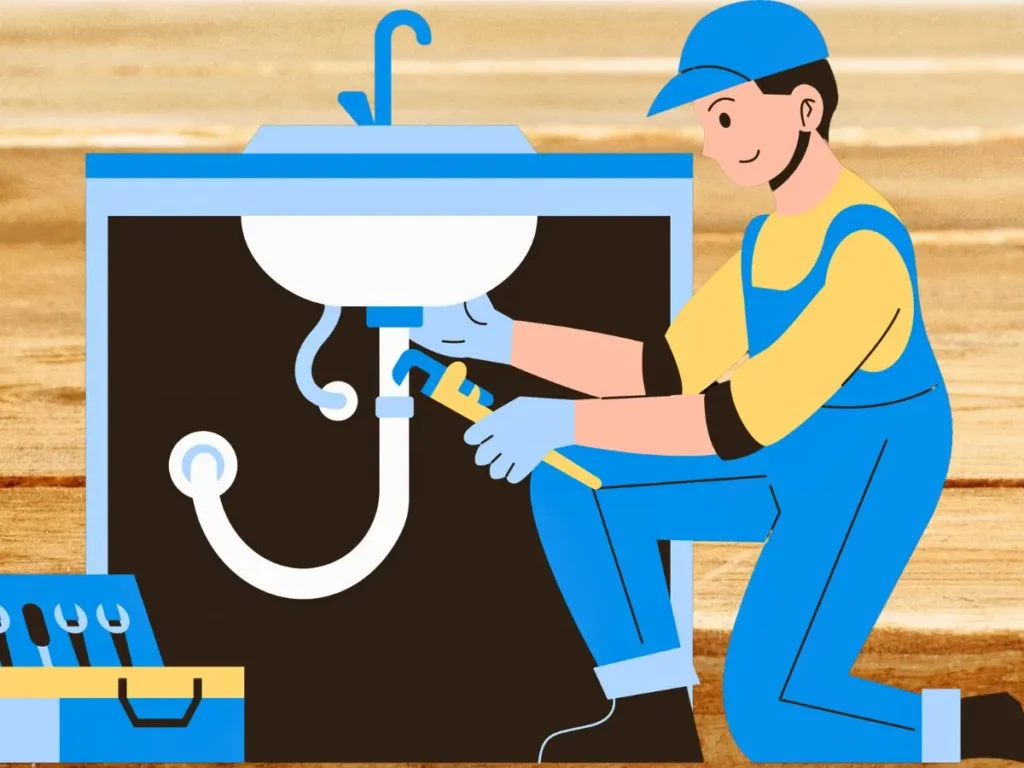
Choosing the proper drainage system—separate or shared—is crucial for reducing the risk of clogs and managing costs effectively. Separate drains typically lower clog risks but have higher initial costs due to extra materials and labor.
They also require more space, which can challenge smaller buildings. Shared drains offer a cost-efficient and streamlined solution, balancing cost and efficiency.
Shared drainage systems must be installed correctly with meticulous planning and regular maintenance to avoid issues like blockages and leaks. Selecting the best drainage system for your project depends on the specific needs and constraints involved.
Practical and Maintenance Questions
How Do You Prevent Clogs in a Shared Drain?
- Install drain traps to catch debris.
- Regularly clean sink drains to minimize buildup.
- Avoid flushing non-biodegradable materials in the toilet.
What Should You Do If a Sink or Toilet Drains Slowly?
Begin using a plunger to clear minor blockages in your sink or toilet. Ensure the rubber cup creates a tight seal, and apply firm, consistent pressure to unclog the drain. Plunging may indicate more complex plumbing issues if it doesn’t work after several tries.
In such cases, consult a professional plumber. They can diagnose potential problems like improper venting or incorrect pipe slope, which may require specialized tools and plumbing expertise to fix effectively. For more plumbing tips and solutions, address these common issues promptly to avoid further damage.
Are Shared Drain Systems More Prone to Plumbing Problems?
Solar panels are an excellent investment for clean energy, but proper installation is crucial for maximum efficiency. Ensuring that solar panels are securely mounted and optimally positioned helps generate the most power.
Regular maintenance, like cleaning to remove dirt and debris, keeps them running efficiently. Routine inspections by a professional can identify potential issues early, avoiding costly repairs and prolonging the life of the solar power system. For optimal solar panel performance and efficiency, follow these guidelines to maximize green energy benefits.
Alternatives and Costs

What Are the Alternatives to Shared Drains?
- Separate Drains for Large Bathrooms: Consider the separate drains option if you’re designing a larger bathroom with a higher budget. This system provides individual drainage for each fixture, ensuring efficient water flow and minimizing the risk of clogs. It’s a premium plumbing choice for those seeking top-tier performance in their bathroom design.
- Cost-Effective Hybrid Drainage Systems: Hybrid drainage systems perfectly balance efficiency and budget for mid-sized bathrooms. These designs use partially shared drains while keeping separate venting systems. This flexible and cost-effective bathroom plumbing solution ensures adequate drainage without needing entirely separate plumbing networks.
Can You Retrofit to Separate Drains?
Retrofitting older homes can be labor-intensive and costly, especially with outdated infrastructure. This process often requires significant modifications to align the structure with modern standards, making it quite complex.
When considering retrofitting, it’s crucial to weigh the costs and benefits carefully. Factors like energy efficiency improvements, potential savings on utility bills, and the impact on property value should all be considered. By optimizing your home with energy-efficient upgrades, you can boost its value and enjoy long-term savings.
How Much Does It Cost to Install a Shared System?
Installation costs can vary due to factors like pipe material, labor, job complexity, and installation area accessibility. On average, pipe installation costs range between $1,500 and $3,000.
Prices may vary significantly by region because of local labor rates and material availability. Remember that unexpected installation challenges can also affect the final cost. If you’re planning a plumbing installation, consider these factors for a more accurate estimate of your plumbing installation costs.
Is DIY Installation Feasible?
Experienced DIYers may find essential connections manageable due to their skills and tools, but complex tasks like venting and code compliance require professional expertise. Ensuring adherence to building regulations is crucial to avoid leaks, poor ventilation, or safety hazards.
Hiring a professional ensures proper installation and compliance with local codes, providing peace of mind. Trust a professional to get the job done right for efficient, safe, and reliable installation. Optimize your home projects and avoid long-term problems by prioritizing expert assistance.
Key Takeaways for Your Plumbing Project
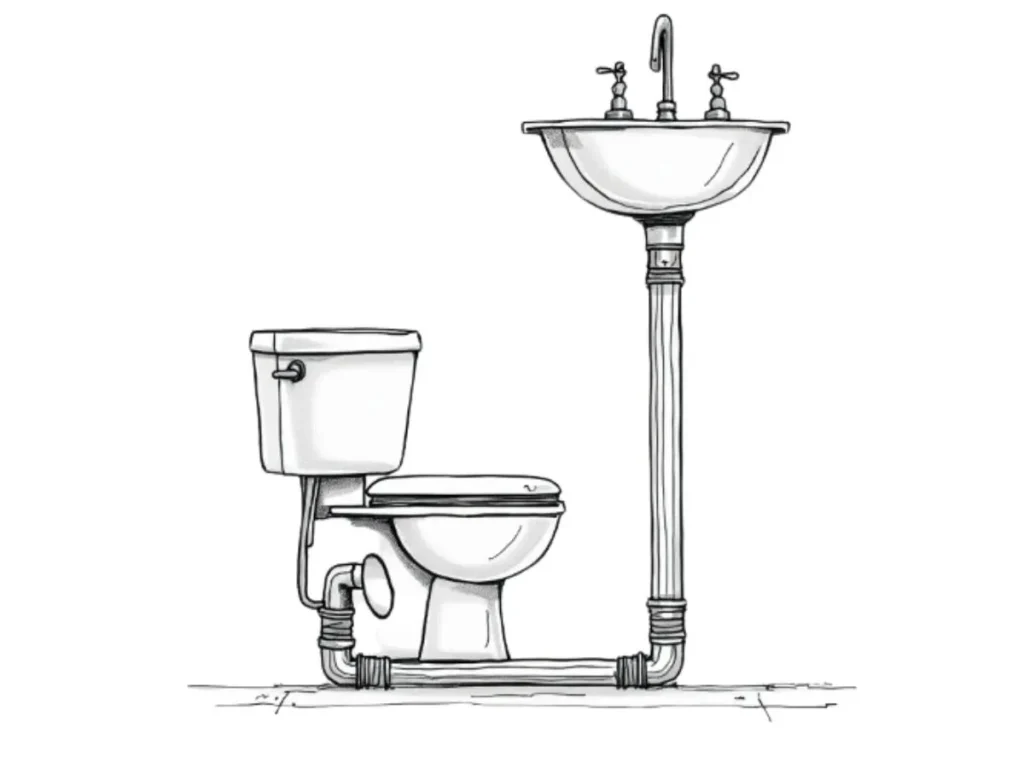
A shared toilet and sink drain system can be an efficient and cost-effective plumbing solution when designed and installed correctly. Whether you’re a DIY enthusiast or consulting a professional plumber, it’s crucial to focus on proper venting, correct pipe sizing, and compliance with local plumbing codes.
Are you looking for expert plumbing advice? Consult a licensed plumber to ensure your plumbing system is efficient, safe, and meets all regulatory requirements. Prioritize professional plumbing services to optimize your home’s drainage systems today!
What tools and materials are required to set up a shared drain system?
- Pipes and Fittings: Use PVC, copper, or ABS pipes for efficient drainage systems.
- Pipe Cutter and Wrench: Essential plumbing tools for cutting and connecting pipes.
- Drain Traps: Install under sinks to catch debris and prevent drain blockages.
- Plunger: Ideal for fixing minor clogs in sinks or toilets.
- Vent Pipe: Necessary for proper venting to prevent sewer gas buildup in your home.
- Gasket Seals and Joint Compound: These sealing materials ensure leak-free plumbing connections.
- Professional Plumber Services: Consider hiring an experienced plumber for complex plumbing installations or consultations. DIY enthusiasts may need specialized plumbing tools, like a drain snake or auger, to tackle deeper clogs.
How much does it cost to install or retrofit a shared drain system?
Installation costs for plumbing systems can vary based on several factors, including pipe material, labor, job complexity, and geographic location. Typically, these costs range from $1,500 to $3,000.
Retrofitting an existing shared drain system may be more expensive due to the extra labor and modifications required. It’s crucial to consult a professional plumber for a precise estimate tailored to your project needs.
Additionally, energy-efficient plumbing solutions should be considered for potential long-term cost savings. Optimizing plumbing installations with efficient materials and techniques can reduce water usage and lower utility bills.

Conclusion
Shared drains can be a cost-effective and efficient plumbing solution when designed and installed correctly. Balancing budget, performance, and compliance with local codes is crucial for any plumbing project.
Consider consulting a professional plumber to ensure your shared drain system is optimized for maximum efficiency, safety, and long-term cost savings. With the right tools, materials, and expert guidance, you can achieve an optimal plumbing setup in your home or commercial space.
Prioritize efficient plumbing systems for a more sustainable future! So remember to always consider all options available before making decisions regarding shared drain systems, and consult professionals when needed for optimal results. Happy plumbing!
- Note: Always consider all options available before making decisions regarding shared drain systems, and consult professionals when needed for optimal results.
- Note: In any plumbing project, prioritize efficiency, safety, and compliance with local codes. Consult a professional plumber for expert guidance and assistance with installations or code compliance.
- Note: Consider energy-efficient solutions for long-term cost savings and a more sustainable home. Optimize your plumbing system by using efficient materials and techniques recommended by professionals. With the right tools, materials, and expert guidance, you can achieve an optimal plumbing setup in your home or commercial space.
Related Posts
-
 14 Dec 2024 RemodelThe Ultimate Guide to a Raised Bathroom on a Concrete Slab
14 Dec 2024 RemodelThe Ultimate Guide to a Raised Bathroom on a Concrete Slab -
 01 Dec 2024 SinkCan You Paint a Kitchen Sink? Unlimited Tips
01 Dec 2024 SinkCan You Paint a Kitchen Sink? Unlimited Tips -
 30 Nov 2024 SinkHow to Clean Granite Composite Kitchen Sink: Expert Tips
30 Nov 2024 SinkHow to Clean Granite Composite Kitchen Sink: Expert Tips -
 29 Nov 2024 SinkHow To Snake A Kitchen Sink Drain Roots Expert 10 Tricks
29 Nov 2024 SinkHow To Snake A Kitchen Sink Drain Roots Expert 10 Tricks -
 28 Nov 2024 SinkHow to Insulate Under Kitchen Sink Expert's 10 Tricks
28 Nov 2024 SinkHow to Insulate Under Kitchen Sink Expert's 10 Tricks -
 27 Nov 2024 SinkCan a Toilet and Sink Share the Same Drain? Unlimited Answer
27 Nov 2024 SinkCan a Toilet and Sink Share the Same Drain? Unlimited Answer -
 26 Nov 2024 SinkCan You Replace a Kitchen Sink Without Replacing the Countertop
26 Nov 2024 SinkCan You Replace a Kitchen Sink Without Replacing the Countertop -
 24 Nov 2024 SinkWhy Does My Bathroom Sink Smell Like Sewer? Causes & Fixes
24 Nov 2024 SinkWhy Does My Bathroom Sink Smell Like Sewer? Causes & Fixes -
 15 Nov 2024 Sink8 Tips For Apartment Kitchen Sink Backup
15 Nov 2024 Sink8 Tips For Apartment Kitchen Sink Backup -
 13 Nov 2024 SinkExpert 10 Tips: Why is my bathroom sink leaking underneath?
13 Nov 2024 SinkExpert 10 Tips: Why is my bathroom sink leaking underneath?


